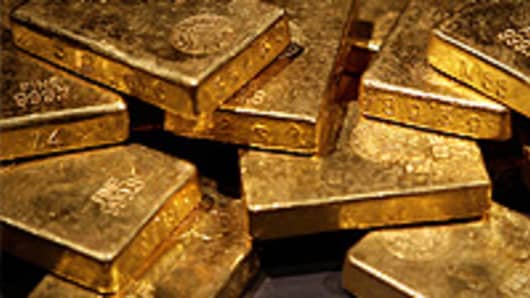There are two ways to look at gold as a young investor: risk vs. available income.
A young investor presumably has a minimum of 30 years until he can retire and therefore can risk more, which makes gold stocks an attractive option.
Most analysts say that gold mining stocks can offer 2:1 leverage to gold's spot price, sometimes even 3:1 and typically lead the gold prices on the way up and the way down.
Spot gold has risen 9.7% in 2010 while Newmont Mining has popped 26%. Some gold stocks even offer the much-sought after dividend like Randgold Resources .
Buying miners, though, is like being a stock picker. Just because the gold price rises doesn't mean that all miners see the increase immediately reflected in their bottom lines. An investor needs to weigh each stock on company by company basis. Kinross Gold , for example, has sunk 10% this year despite the pop in gold prices.
"There's a number of cost elements that are directly or indirectly related to [the] gold price and when [the] gold price goes up so do those cost elements," says Adam Graf, director of emerging miners for Dahlman Rose & Co.
Graf loves mining stocks and tries to stick to forward-looking valuation. "On a theoretical basis, if gold moved up $100 an ounce, what does the change in the current value do based on what the forward-looking cash flow should do?"
Among the mining sector there are hundreds of options from large-cap names like Barrick Gold and Goldcorp to smaller speculative names like NovaGold and Seabridge Gold .
Small-cap miners have become a trendy way to play higher gold prices. The stocks offer a big potential pay out but also come with big risks. Small gold companies tend to be explorers and producers. They are burdened with geopolitical issues, environmental setbacks and funding problems.
On the flip side, large-cap miners have cash flow and are in production but have growth issues. The more gold they mine, the more pressure they have to find new resources to supplement their output. Large miners are often forced to shell out the cash to buy a smaller company.
For younger investors looking for some sort of safety amidst this risk, the Market Vectors Gold Miners , a basket of large-cap miners, and the Market Vectors Junior Gold Miners , a collection of small gold miners, make attractive options.
The upside potential won't be as high but safety compared to risk could be a good combination for a long-term beginning investor. The GDX has risen 12% year to date while Barrick, its largest holding, rose more than 18%.



